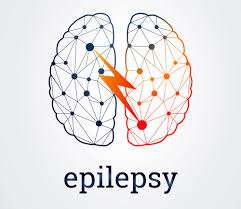
Epilepsy is a severe disease that can completely change the lives of those who suffer from it. There are about 3.4 million people that have been diagnosed with the disease just in the United States. Usually diagnosed either during childhood or late in adulthood, the disease causes a variety of different kinds of seizures to occur unpredictably. If not properly managed or treated, the disease will greatly decrease the patient’s quality of life and can easily lead to an early death.
What is Epilepsy?
Epilepsy is the name given to a broad range of conditions characterized by a patient who repeatedly has seizures without an identifiable, reversible cause. Sometimes a particular medical issue might cause a one-time seizure, but this is different to epilepsy. For example, low blood sugar that leads to a one-off seizure, but doesn’t cause multiple seizures over time and can be easily corrected.
A seizure is when the brain experiences an abnormal amount of electrical activity in a particular region. Depending on the region where the activity occurs, the presentation of the seizures might be different. Certain types of seizure will have different impacts on the lives of the patients who are suffering from the condition.
Most seizures last for a very short period of time, only a few minutes. Any seizure that lasts longer than 5 minutes is a major concern and should lead to immediate medical treatment. There are varying symptoms depending on the type of seizure that occurs.
Some are more obvious, while others can be harder to notice, even in the person suffering from them. They fall into two broad categories depending on how widespread the electrical disruption in the brain is. When the activity is concentrated in a relatively small area, the seizures are called focal seizures. When they involve all parts of the brain, they are known as generalized seizures.
Focal seizures
Focal seizures are less noticeable than generalized seizures since they consist of symptoms that are mainly neurological. These may be symptoms where the patient loses awareness of their surroundings but continues to carry out activities unaware, or more subtle symptoms where the patient is fully conscious for the duration of the seizure.
Symptoms that appear without losing awareness include changes to how the senses are interpreted or other sensory-based symptoms such as dizziness or visual auras. These can easily be attributed to merely a pausing sensation or attributed to other causes.
When the patient does lose consciousness, symptoms include staring into space and not responding to external stimuli, or a repetition of a particular activity such as walking without purpose, chewing with an empty mouth or repetitive, meaningless hand motions. The patient may appear conscious but will be unresponsive and won’t be able to remember what happened for the duration of the seizure.
Because focal seizures may be relatively minor, and the sufferer may experience an altered state of consciousness for the duration, those who experience them are not always aware that they are having a seizure. Patients often go a long time without realizing that they have regular seizures, since they can be hard to detect when not being observed by another person.
Generalized seizures
Since this kind of seizure involves the entirety of the brain, they are often more noticeable. They may include seizures where the patient stares blankly into nowhere and makes repetitive movements in a similar way to some kinds of focal seizures. However, generalized seizures also include seizures that affect the muscles on a much larger scale. These can cause the stiffening of muscles, or a general loss of control, either of which can lead to a patient collapsing.
Other kinds of generalized seizures cause a repeated jerking motion to occur somewhere in the body, but usually in the arms, legs or face. These can be relatively minor, or can cause the entire body to shake while the sufferer loses consciousness at the same time, while experiencing stiffening and shaking of the whole body. This is a very dangerous type of seizure since if it occurs at an inopportune moment, such as when driving or swimming, it can put the patient at risk of harm from their surroundings.
Underlying Causes of Epilepsy
It is not clear what causes epilepsy based on the current state of medical research. While it is well-known that individual seizures are caused by aberrant electrical signals in parts of the brain, although the precise events that trigger a particular season are not well-understood. Moreover, the reason that some people are affected by epileptic seizures and not others is also relatively unknown.
What is known is that there is likely to be a significant genetic component. Although there is no single gene that determines epilepsy, about one third of people who suffer from epilepsy have another family member who also has the condition. It is therefore likely the case that there are a number of genetic factors that make an individual susceptible to the disease, but there are other factors that determine whether or not an individual will actually contract it.
Rarely epilepsy may be caused by damage to the brain, including damage arising from complications during birth, a head injury, overuse of certain drugs including alcohol, or a tumor in the brain.
Current Treatment Methods
There are a variety of different treatment methods currently available to those individuals who suffer from epilepsy. Since the cause of epilepsy in general is unknown, the different treatments may be more or less successful in different patients.
There are also many different kinds of epilepsy depending on the area in the brain where the unusual electrical activity occurs. The different kinds of epilepsy may also have different causes, and so it is unlikely that a single treatment would be successful for all epilepsy patients.
Antiepileptic Drugs
There are a number of medications that are designed to treat epilepsy. These medications are prescribed at a dosage designed based on how severe and frequent the seizures are, as well as which kinds of seizures a patient experiences.
These medications are designed to inhibit the activity in the brain that goes out of control during a seizure, reducing the level of activity to a more manageable level.
Usually the medication starts at a relatively low dosage, which is then increased until the seizures stop happening. Over time, some patients are able to cease taking the medication and then continue to live without seizures for the rest of their lives. This is particularly true for those who experience epilepsy as a child. An appropriate timescale for tapering off the medication will be tailored to the patient.
These medications may come with a range of major and minor side effects, since they directly alter the chemistry of the brain. These can include fatigue, depression, suicidal thoughts, problems thinking clearly, problems speaking clearly, and problems with memory.
Despite these potential side-effects, anti-epileptic medications are able to successfully treat patients who suffer from epilepsy in about two thirds of all patients who are diagnosed with the condition.
Those who are unable to be treated by medications, or who experience side-effects that are too severe are left with few options, however. The main alternative treatment that has been prescribed traditionally is surgery, although this has very limited possibilities as a treatment.
Surgical Resection
The goal of treating epilepsy with surgery is to remove the part of the brain that is causing the seizures. It is therefore only possible when the type of epilepsy presented in the particular patient is caused by a small area of the brain that can easily be located and operated on without causing damage to parts of the brain involved in essential life activities.
Given the relative rarity of forms of epilepsy that can be treated surgically, as well as the high risks associated with any form of brain surgery, there is a clear need for other forms of treatment that are both safe and successful. Thankfully, stem cell therapy has emerged as a potential treatment for patients with epilepsy.
Stem Cell Therapy for Epilepsy
There are a great number of different ways in which stem cells are hoped to provide new treatment methods for epilepsy patients. The complexity of the condition means that there is no single clear path to finding a treatment, but rather a number of possible options that have been suggested.
Transplantation of Interneurons
Interneurons are a type of nerve cell that connects different regions within the brain, allowing different parts to communicate with each other. In a healthy brain, there is a balance of neurons that promote activity within the brain and neurons that reduce the activity. In a seizure, the activity of these neurons become imbalanced and the level of electrical activity becomes uncontrollable.
One possible approach to use stem cells to treat epilepsy is to locate an area within the brain that contains the stem cells that produce interneurons that inhibit neural activity. Then these stem cells can be extracted, and re-transplanted into the areas of the brain where seizures begin. These stem cells would then differentiate into more inhibitory neurons, which may then be able to provide a greater level of balance within the brain and prevent seizures.
This approach has already been shown to be successful in some animal studies, so provides a possible new path to pursue in continuing to investigate this approach in human patients.
Induced pluripotent stem cells
Even without directly leading to a cure, stem cell technologies can also be used to help the progress of research towards finding a cure using different means.
For example, some forms of epilepsy are caused by mutations within the neurons in the brain. This makes the cells respond in a different way to neurotransmitters that promote or inhibit activity within the brain. In such a case, providing more defective neurons into the areas where seizures begin won’t help to decrease the number of seizures. Despite this, scientists have found a way to use stem cells to help study such conditions.
To help find a cure, it is important to understand how the mutation in the neurons changes how the neuron responds to different chemicals and different forms of treatment. However, it is clearly very difficult to extract neurons directly from the brains of patients who suffer from the disease, and the risks of damage outweigh the possible benefits associated with improving the current state of research.
Instead, scientists have found a way to take ordinary cells from a patient’s skin, and treat them with a particular mixture of biochemicals and growth factors to cause them to “regress” into a type of stem cell that is able to differentiate into a wide variety of cells. This is called an induced pluripotent stem cell – induced because the change from skin cell to stem cell is carried out or induced through artificial means, and pluripotent because the resulting cell is able to become several different types of cell.
Once these induced pluripotent stem cells have been produced, they can then be treated in a laboratory to differentiate into neurons that exhibit the mutation that causes a particular form of epilepsy. This allows the mutated neurons to be produced and then studied in a laboratory, to both better understand how the mutation affects the cell, as well as how the mutation responds to different forms of treatment.
This use of stem cells is making it significantly easier for scientists to understand the different types of epilepsy and look for cures in a safe and ethical way.
Current Evidence of Stem Cell Treatment for Epilepsy
A number of studies have been carried out to assess the possibility of using stem cell technologies to help cure epilepsy. One recent study was carried out in 2018 that involved taking induced pluripotent stem cells from humans and causing them to differentiate into cells very similar to the neurons in the brain that inhibit activity that becomes unbalanced during a seizure. These cells were then transplanted into the hippocampus of rats that had temporal epilepsy induced in them for the purpose of the study.
This study showed that the transplant not only produced cells that successfully took root and integrated into the hippocampus, but that these cells took a direct role in controlling seizures and reducing the frequency of seizures in the treated rats.
As well as being the location where the seizures for the particular type of epilepsy being investigated originates, the hippocampus also plays a key part in creating and processing memories and managing mood. The study showed that this transplant also improved cognitive function, as well as the mood of the rats that were involved in the study. This is an exciting prospect since it demonstrates that as well as reducing the number of seizures, it also improved the overall functionality of the region. Thus, this treatment may therefore be able to improve the overall quality of life of patients who suffer from epilepsy, as well as controlling the seizures.
As stem cell technologies advance, new methods of using stem cells to look for treatments for epilepsy will continue to be developed and help the advancement of treatments that will ultimately lead to a cure for this disease. Reach out to the BioXcellerator team today to learn more about stem cell therapy for epilepsy. Our team can create a personalized treatment plan for your specific case.

